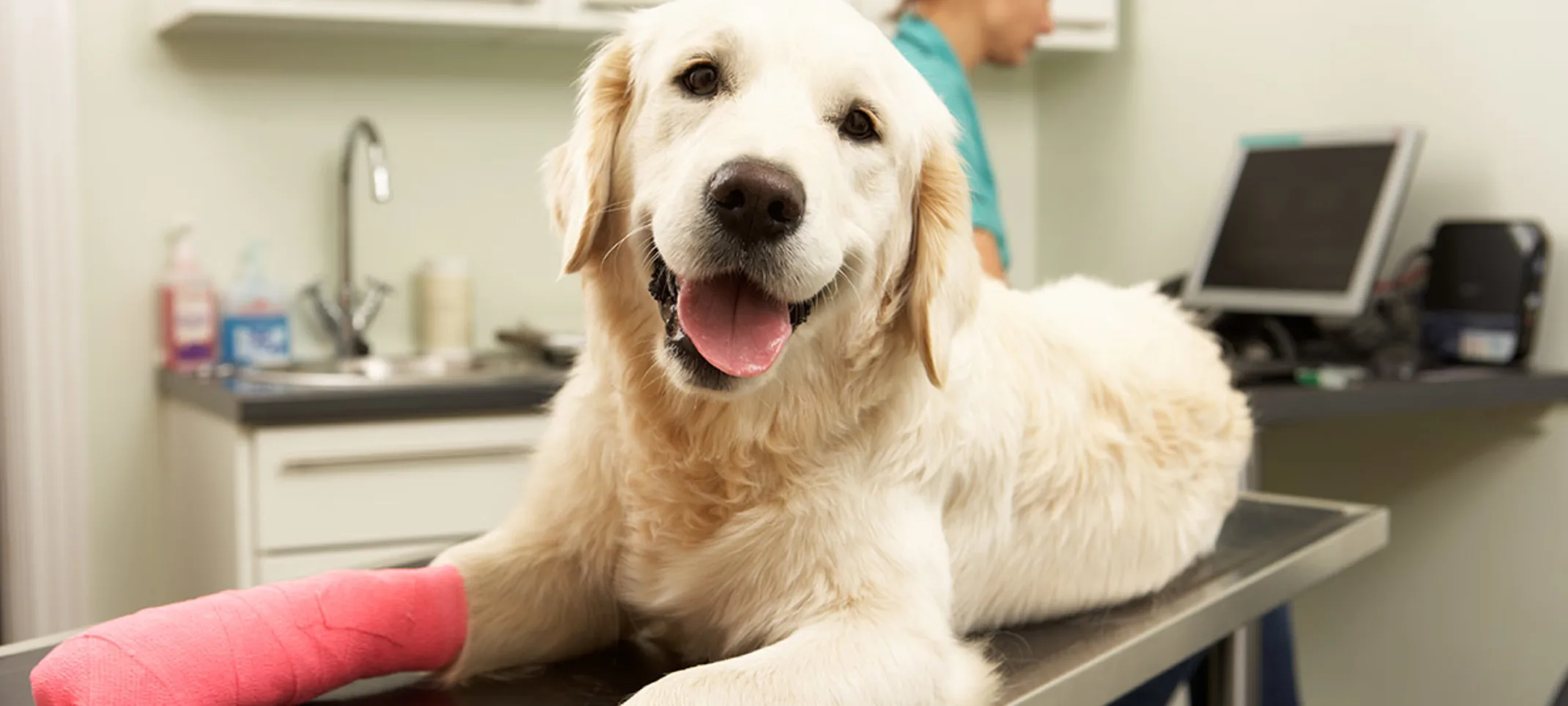Airline Animal Health and Surgery Center
Orthopedic Surgery
Orthopedic surgery can help pets who suffer from joint problems, torn ligaments, broken bones, and even help correct congenital problems.

Overview
Orthopedic surgery treats bones, joints, ligaments, and muscles—areas in which your pet may feel pain in from a variety of conditions. If veterinary orthopedic surgery is recommended for your pet, we will do everything possible to keep them safe and comfortable before, during, and after the surgery.
Why would my pet need orthopedic surgery?
Orthopedic surgery can help animals who suffer from joint problems, torn ligaments, broken bones, and can even help correct congenital problems. Most orthopedic surgery is focused around the cranial cruciate ligament (CCL), sometimes referred to as the Anterior Cruciate Ligament (ACL).
When should I seek orthopedic care for my pet?
Pay attention to the way your pet is moving around, any unusual changes may mean they have an orthopedic condition.
Typical symptoms of an orthopedic disorder include difficulty getting up, favoring a leg intermittently when walking, limping - swelling in the leg, stiffness or decreased activity level. If you notice any of these problems, you should take your pet to our facility for an examination.
How are typical orthopedic injuries treated?
Surgical Techniques - A Lateral Suture Technique
A lateral parapatellar arthrotomy approach to the joint is most common:
The intra-articular structures are examined, torn fibers of the cranial cruciate ligament (CCL) are often debrided, and any meniscal damage is addressed.
The joint is flushed with sterile saline and the joint capsule closed with monofilament absorbable suture in the continuous or interrupted pattern of the surgeon’s choice.
A heavy monofilament synthetic suture is employed in our extracapsular stabilization techniques:
This suture is passed around the lateral fabella and through a hole in the tibial crest in a mattress fashion. It is then passed under the patella where it is tightened and affixed to the other end with a metal crimp.
Surgical Results
Extracapsular stabilizations result in improvement in 85% to 94% of dogs
Lameness may reoccur in some dogs with advancing arthritis or those in which the periarticular fibrosis is not sufficiently strong to limit abnormal thrust when the artificial ligament fails or issues arise when the pet is rejecting the implant. We try to minimize this by doing post operative laser therapy and PRP injection. This paired with 10 sessions of Physical Therapy on a water treadmill help the pets get back to more normal physical activity quicker. Based on experience, some dogs with extracapsular stabilization will require treatment or reoperation for lameness during their lifetimes, sometimes years after the original surgery, but most cases are just removing the implant.
Luxating Patella Surgery
Patellar luxation is a dislocated kneecap and most commonly seen in small breed dogs. Most patellar luxation occurs when the patellar displaces from its normal position to the inside of the knee. Pets with this condition may have an intermittent non-weight bearing lameness and you may even hear a popping noise in their knee. There are many ways to treat this from a simple knee brace for a Grade 1 luxation, to realignment surgery for lower grade luxations. Bring your pet in so we can determine the best way to treat the luxation.
Fracture Repairs
A fracture is a break in the bone or cartilage and can be repaired from simple external splinting to more advanced internal plating. Fractures are typically caused by trauma, a disease or tumor in the bone, or stress applied to a certain bone.
Our veterinarians adhere to the highest level of care standards for all surgical procedures. Our highly skilled doctors place the utmost emphasis on pain management to ensure your pet is safe and comfortable throughout the treatment process. Using advanced technology, your pet's vital signs are monitored by our veterinary technicians, who will remain with your pet through recovery.
